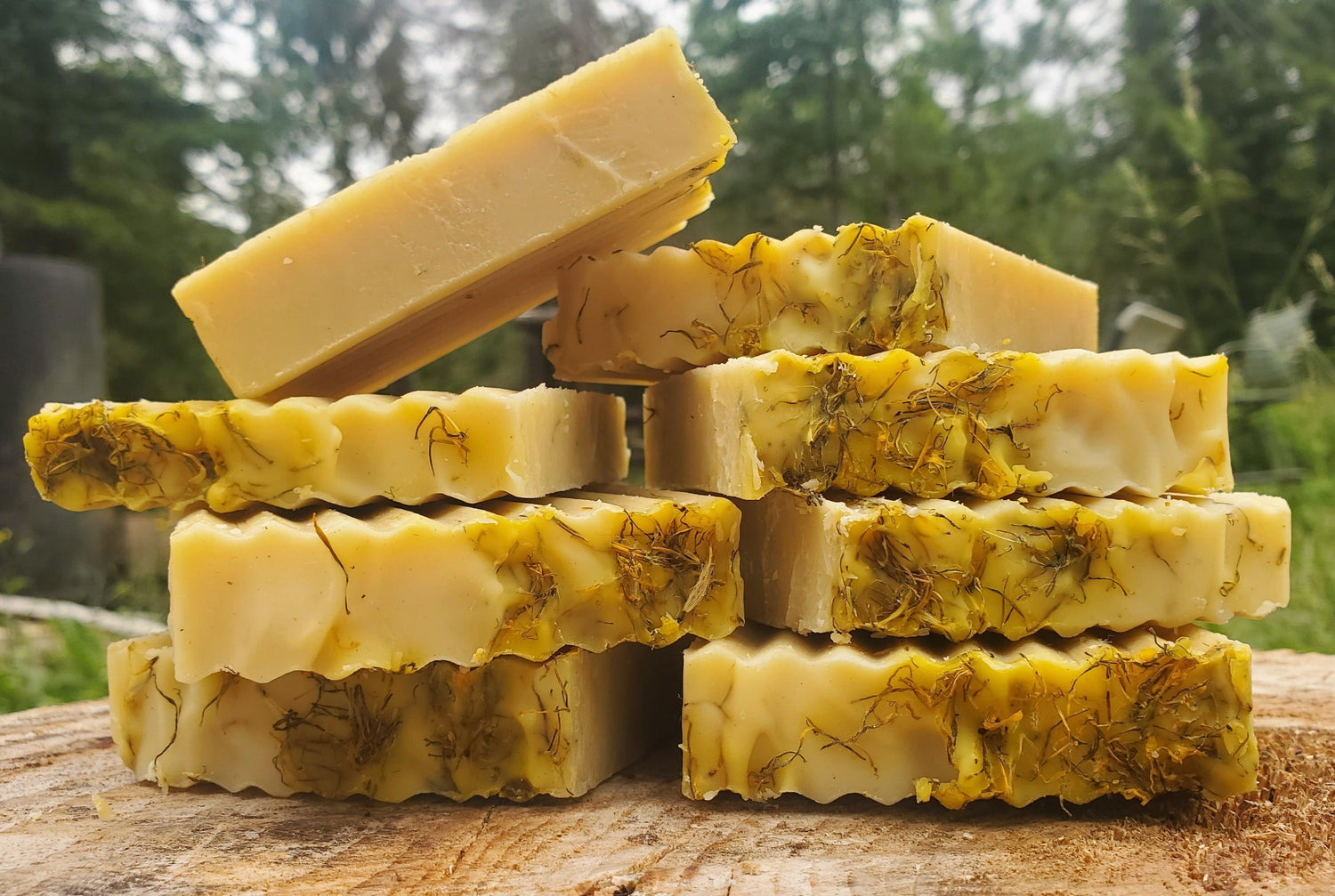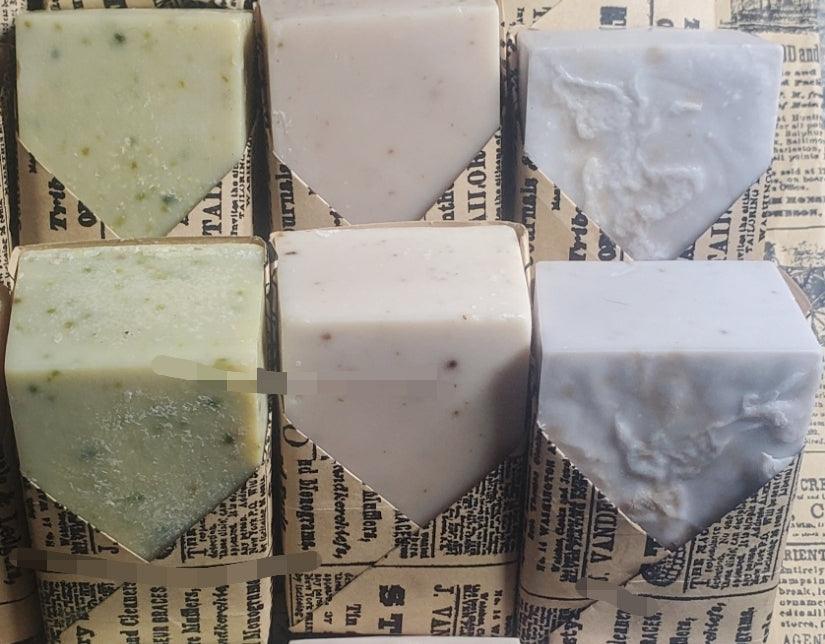
Soapy Science: The Alchemy Behind Soap: Lye (NaOH)
Lye, The Unsung Hero of Soapmaking
Lye. --- The word itself might conjure images of harsh chemicals and dangerous burns. But in reality, lye is a fascinating substance with a rich history and a surprisingly wide range of uses.
What is Lye?
Lye is a strong alkaline substance typically produced from sodium hydroxide (NaOH) or potassium hydroxide (KOH). It's a powerful base that reacts strongly with acids and fats.
A Bit of History
The use of lye dates back centuries. Ancient civilizations used it for various purposes, including Cleaning. Lye solutions were used to clean and sanitize surfaces. Even Food Preparation. Lye was used to make certain foods, such as pretzels and lye hominy. And the best one yet, Soapmaking. This is perhaps the most well-known use of lye. Early soapmakers used lye derived from wood ash to create soaps that tended to be harsh. The concentration of ash produced Lye is often unpredictable, leading to excess Lye left in the finished soap.
Lye in Soapmaking
Lye is the crucial ingredient in the traditional cold process method of soapmaking. Here's how it works
When lye is mixed with oils or fats, a chemical reaction called saponification occurs. During this process, the triglycerides in the oils and fats are broken down, and the glycerol is released. Soap is formed. The fatty acids then combine with the sodium or potassium ions from the lye to form soap molecules. You can learn more about Saponification in our other Blog Posts.
The Lies about Lye: Misconceptions About Lye Soaps
"Lye soaps are dangerous" is a common misconception. Properly made lye soaps are completely safe to use. During the saponification process, virtually all of the lye is used up to create soap. Any residual lye is neutralized, leaving behind a gentle cleansing product.
"Lye soaps are harsh on the skin" is also a common misconception about cold process soap. High-quality lye soaps, made with nourishing oils and fats, can actually be gentler on the skin than many commercial soaps. This is because they lack harsh detergents and synthetic chemicals.
Important Notes About Working with Lye :
Safety First: Working with lye requires caution. Always wear appropriate safety gear, such as gloves and eye protection.
Accurate Measurements: Precise measurements are crucial in soapmaking. Using too much lye can create a harsh soap, while using too little can result in an incompletely saponified product.
Lye, when used responsibly, is a valuable ingredient in soapmaking and other applications. By understanding its properties and following proper safety procedures, you can harness its power to create effective and enjoyable products.
Thanks for Reading! -- The Lazy Dairy Maid
Author: Lazy Dairy Maid --
Sharing a daily routine with these animals and nurturing the land has instilled a deep appreciation for natural ingredients and time-honored traditions, like bread baking, cheesemaking, and the art of cold process soap production.
Read More Here--- Meet the Maker: Lazy Dairy Maid
Side Note: This blog post focuses on the use of lye for making soap. It does not delve into the specific properties of any soap itself, as those would fall under the purview of the FDA as cosmetics or drugs.
This blog post aims to inform it's readers about lye and saponification, highlighting the care and craftsmanship involved in creating this natural and luxurious product.
Related Posts
-

Frankincense, Myrrh, and Mardi Gras: A Celebration of Tradition
While no longer used for embalming, frankincense and myrrh continue to be valued for their aromatic properties. Their complex and evocative scents are often used in perfumes, incense, and aromatherapy. More recently, they've found their way into handcrafted soaps, adding a touch of history and luxury to everyday cleansing.
-
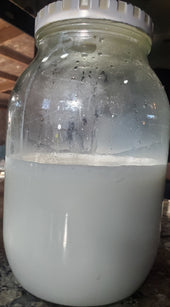
Beyond the Dairy: Raw vs Powdered Goat Milk
At EastDarringtonTrade.com, we're driven by a passion for creating exceptional true soaps that harness the power of nature. We believe that the best natural soaps come from the purest of ingredients, and that's why we're committed to using fresh, raw goat milk in our cold processed soaps. We're confident that you'll feel the difference.
-
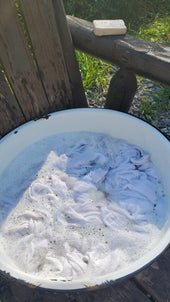
Soapy Science: The Science Behind the Suds
At EastDarringtonTrade.com, we're passionate about crafting high-quality, cold process soaps that are both gentle and effective. We believe in the power of true soap and the benefits it offers for your skin. Explore our collection and discover the difference for yourself!
-
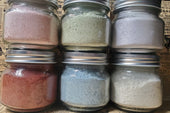
Unearthing Magic: Exploring the Use of Clays in Soapmaking
By exploring the diverse world of colored clays, you can create truly unique and visually appealing soap creations. Enbrace the use of clays into your cold process soap and enjoy a unique and potentially beneficial product. Remember to experiment responsibly and enjoy the creative process!
-
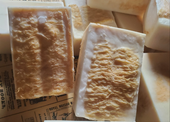
Beyond Botanicals: The Amazing Luffa
While we most commonly associate luffas with exfoliating bath sponges, their uses extend far beyond the shower. In their immature stage, luffa gourds are edible and are used in various cuisines around the world. They can be prepared like squash or okra, adding a mild flavor and slightly firm texture to dishes.
-

Unearthing Magic: Moroccan Red Clay
When used in cold processed soaps, the clay imparts a beautiful, natural reddish-brown hue, eliminating the need for artificial colorants. Beyond its aesthetic appeal, the clay contributes a silky, smooth texture to the soap.
-
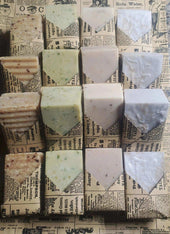
Beyond the Label: True Soap: What it is and Why it Matters
At EastDarringtonTrade.com, we're passionate about true soap. We believe in the power of simple ingredients and the traditional methods of soap making. We invite you to explore our collection of handcrafted goat milk and coconut oil soaps, as well as our plant-based alternatives. Experience the difference of true soap for yourself!
-

Goaty Goodness: A Gentle Cleanse
Using soap made with goat milk is more than just a cleansing ritual. It's an opportunity to connect with the natural world and appreciate the dedication of those who care for the animals and craft these unique products. -

Beyond the Label: The Dirt on Detergents
American consumers often use the words “soap” and “detergent” interchangeably, but in reality there are significant differences between these two types of cleaners. Cold Process Soap is NOT a Detergent!
-
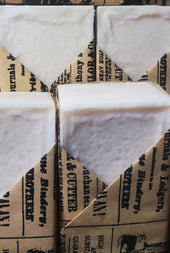
Breaking the Rules: Only Coconut Oil
Experimentation is Key: Creating a successful soap made with only coconut oil for the oil portion, requires careful consideration of the superfat percentage. A popular ingredient in many homemade and commercial soaps due to its hard-bar forming properties and its ability to create a rich lather. When used at a high superfat percentage, coconut oil soap can be incredibly gentle and moisturizing for the skin.
-
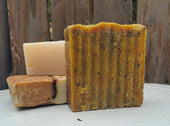
Soapy Science: Keeping It Simply Soap
A fairly simplistic description of soap making, but it covers the basics. Soap made with the cold process method as opposed to hot process, produces a superior bar of soap, in my opinion. Once you feel the difference natural soap makes on your skin, you'll be a believer too!
-

Beyond the Bar: The Skinimalism Movement
By offering both Cruelty Free Goat's Milk and plant-based alternatives, East Darrington Trade caters to a wider range of customer preferences and sensitivities. Enbrace the growing trend towards natural, ethical, and personalized skincare. By utilizing simple formulations, prioritizing natural ingredients, and focusing on sustainability, East Darrington Trade offers a truly unique and mindful approach to daily self-care.
-

Unearthing Magic: So Salty? Exploring the Use of Salt in Soap
Salt, a seemingly simple substance, has played a pivotal role in human civilization for millennia. From preserving food to seasoning our meals, salt has been an essential commodity throughout history. But did you know salt can also be a valuable ingredient in soapmaking?
-
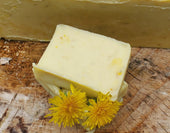
Beyond Bees: Honey and Beeswax in Soapmaking
By incorporating honey and beeswax into soap, you can experience a unique and luxurious product while supporting the vital role of bees and other pollinators in our environment.
-
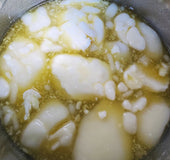
Beyond Butters: Creating Creamy Lather
By exploring the diverse world of butters, you can experience unique and luxurious soaps that are both beautiful and beneficial.
-
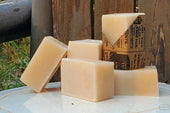
Beyond the Dairy: Plant Based Vegan Milks
By exploring the use of plant-based milks, soapmakers can create innovative and unique products while embracing a more sustainable and compassionate approach to ingredient sourcing.
-
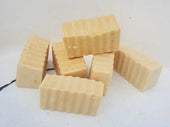
OIL'lisious Olive Oil: Castile Soap
Explore the wonders of olive oil and Castile soap. Experiment with different uses and discover the unique benefits these natural products can bring to your life.
-
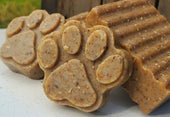
Pawsitively Clean: Pet Soaps
Cold processed soap offers a natural and potentially gentler alternative to commercial pet shampoos. By choosing high-quality, pet-safe soaps and taking necessary precautions, you can provide your furry friend with a clean and comfortable cleansing experience while supporting sustainable and ethical practices.
-
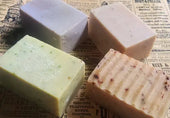
Beyond Botanicals: Natural Soap Making
Embrace the Natural World. By exploring the diverse world of natural colorants and fragrances, you can experience unique and captivating soaps that are both beautiful and beneficial.
-
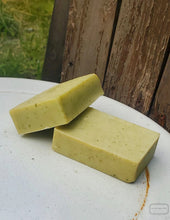
Clean and Green: Plant Based, Vegan Soap
Veganism, a philosophy and a plant based lifestyle that embraces and excludes the use of animal products, has seen a significant rise in popularity. This extends beyond diet, encompassing choices in clothing and personal care products. One such area gaining traction is vegan soap.
-

Ancient Grains: The Outrageous Oat
Oats aren't just for breakfast bowls! Their nourishing properties extend to skincare, making them a fantastic addition to your homemade soap.
-
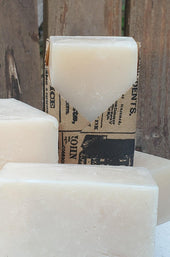
The Colossal Coconut: The Gods Fruit
Using coconut oil and milk in cold-process soap is a great way to build a healthy lather. The creaminess of coconut oil combined with either Goat or Coconut Milk helps create a luxurious lather that leaves your skin feeling clean and moisturized.
-

Beyond the Bar: Men Have Skin Too....
Whether you're a man looking to elevate your grooming routine or a woman seeking a touch of indulgence in your daily skincare ritual, natural soaps offer a sensory experience like no other. With their natural fragrances, and artisanal craftsmanship, indulge in a moment of luxury and self-care that transcends gender and leaves a lasting impression on the skin and senses alike.
-

Soapy Science: Super Fat is Super Fly
Superfatting is a simple yet effective technique that can significantly enhance the quality and moisturizing properties of your cold process soap. By incorporating goat milk and coconut oil into your recipes, you can create luxurious and beneficial bars that are gentle on the skin and a delight to use.
-
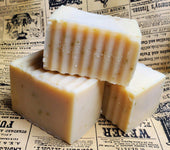
Beyond the Label: Unwrapping the Regulations for Soap Labeling
Understanding the regulatory differences between homemade soap and cosmetics is crucial for anyone involved in creating and selling homemade products. By adhering to relevant regulations and ensuring product safety and accurate labeling, manufacturers can build trust with consumers and avoid potential legal issues. -
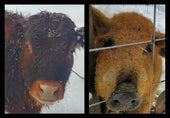
Oily Showdown: Lard vs Tallow
-
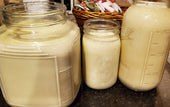
Dairy Showdown: Goat Milk vs Cow Milk
Ultimately, the best choice between goat milk and cow milk depends on your individual needs and preferences. If you're looking for a more easily digestible and nutrient-rich dairy option, goat milk is an excellent choice. And if you're looking for a natural cleansing alternative, goat milk soap is definitely worth trying.
-
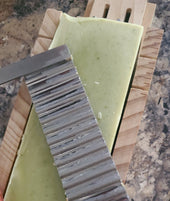
Soapy Science: What is Saponification?
No matter how soap is made, whether in a large kettle with heat, or using the cold-process method, all soaps share a few common traits.
-

Soapy Science: What is Cold Process Soap?
Soaps with synthetic ingredients strip your skin of natural oils, while Cold Process Soap gently cleans the skin.
-
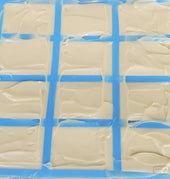
Soapy Science: Melt and Pour Soaps: A Beginner-Friendly Option
While melt and pour soap is a fun way to make soap, it's not as long-lasting as cold process soap. Cold process soap is made from scratch with raw materials like oils, butters, and lye, and it can be formulated to suit your skin type and other needs.
-
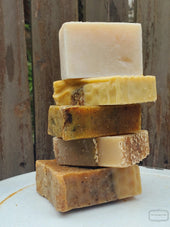
Beyond the Bar: The Lather of Luxury
Indulge in the lather of luxury and discover the transformative power of natural cold-processed soaps. Whether you choose the goat milk soap or the vegan coconut milk soap, you're making a conscious choice for your skin and the environment.
-
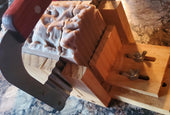
Beyond the Bar: It's Only Natural... Soap
Natural soaps represent a return to simple, wholesome ingredients that benefit both the skin and the environment. By choosing natural soaps, consumers can enjoy gentle cleansing while supporting ethical practices and sustainability.
-

Soapy Science: The Biggest Little Biome.
By incorporating natural ingredients into your skincare routine and adopting healthy lifestyle habits, you can support and maintain a strong skin barrier and microbiome, ensuring your skin remains healthy, resilient, and beautiful.
-

Soapy Science: A Brief History of Soap
The history of natural soapmaking is a testament to humanity's ingenuity and creativity in harnessing the power of nature to create cleansing and nourishing skincare products. From ancient civilizations to modern artisans, the tradition of soapmaking continues to thrive, offering us a timeless reminder of the importance of cleanliness, hygiene, and self-care in our daily lives.
-

Past Batch: Dandelion Goat Milk Soap
Naturally Fragranced. Luxurious Lather for Chemical Free Bathing. Palm Oil Free Organic Formulation. Plastic Free with Recycled paper packaging.
-

Past Batch: Spice Tea w/ Goat Milk & Raw Honey.
Spice Tea w/ Goat Milk & Raw Honey. Naturally Fragranced. Luxurious Lather for Chemical Free Bathing. Palm Oil Free Organic Formulation. Plastic Free with Recycled paper packaging.
-
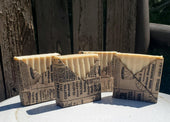
Past Batch: Pure Goat Milk Castile Soap
100% Organic Olive Oil All Natural Artisan Made Cold Process Castile Bathing Soaps made with Cruelty Free and Sustainably Sourced Fresh Goat Milk. Natural Fragrance and No Colorants.
-

Past Batch: Pumpkin Spice, Vegan Friendly Formulation
Vegan Friendly Pumpkin Spice Cold Process All Natural Organic Fragrance Free Bath Soap Bar. Palm Free, Handmade Artisan Soap. Luxurious Lather for Chemical Free Bathing.
-
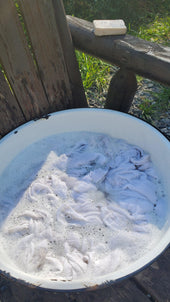
Past Batch: Laundry, Stain Remover, Vegan Friendly Formulation
Cold Process Soap for Fabric Cleaning and Textile Washing by Hand. Artisan made with Coffee and Coconut Oil. Vegetarian Friendly Formulation.
-
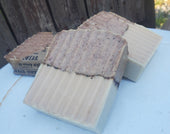
Past Batch: Apples, Spice & Apple Cider Vinegar Bath Bar
Treat your skin to a luxurious experience with our handmade cold process soap bar, perfect for those looking for a natural and effective skincare solution.
-

Past Batch: Lavender / Elderberry Custom Goat Milk Soap with Brazilian Purple Clay Wholesale Loaf
Lavender / Elderberry Custom Goat Milk Soap with Brazilian Purple Clay Wholesale Loaf
-
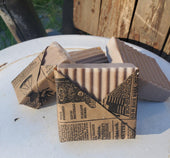
Past Batch: Lavender & Elderberry, Shea Butter Bathing Bar
Homestead made with simple minimalist and sustainable ingredients. Zero Waste, Eco-Friendly Products. All Natural with a Purpose. Unique and Rustic, Small Batch Soaps. Palm Oil Free Formulations. Naturally Fragranced with out the use of Fragrance Oils. Custom Formulations or Personalized Packaging for your Special Guests / Occasions.
-
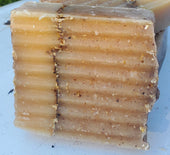
Past Batch: Clove & Spice with Oats Goat Milk Soap
Clove & Spice with Oat Powder Cold Process Soap made with Fresh Goat Milk. Oatmeal Bathing Bar with Clove Oil and Spices. Eco Cleaning with Sustainably Sourced Oils and Organic Additives.
-
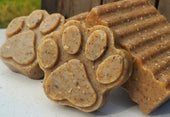
Past Batch: Pet Wash Goat Milk Soap
Cold Process Pet Wash, Bar Soap Handmade with Fresh Goat Milk and Your Pets Needs in Mind. Pet Spa Gift. Cruelty Free and Eco Friendly Plastic Free Recycled Paper Packaging.
-
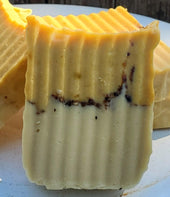
Past Batch: Honey, Almond, Tumeric & Witch Hazel Goat Milk Based Soap
Goat Milk Based Formulation:
Oils used include: Olive Oil, Shea Butter, and Coconut Oil. Made with Fresh Goat Milk, Almond Powder, Tumeric, Witch Hazel, Honey, and Lavender Essential Oil.Vegan Friendly Alternatives Available.














































